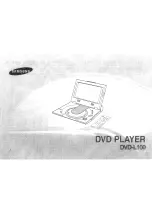
Getting Started
R&S
®
SMC100A
41
Quick Start Guide 1411.4077.62 ─ 07
Tip:
For remote control over LAN or USB, you can use the R&S
VISA (Virtual Instru-
ment Software Architecture) library provided for download at the Rohde
&
Schwarz
http://www.rohde-schwarz.com/rsvisa
This way of operation and the instructions how to set up a connection for remote con-
trol are described in the operating manual, chapter "Remote Control Basics". The
description of the remote control commands is provided in the operating manual, chap-
ter "Remote Control Commands".
Remote access
Remote access is the operating of the instrument from a remote computer. Both the
R&S
SMC and the computer are connected in a LAN.
Remote access
in contrast to
remote control
does not use remote-control commands
but a separate software which is installed on the remote computer. After its start, the
software simulates the user interface of the instrument. The instrument can thus be
operated from the remote computer as on the unit itself. The individual functions are
operated using the mouse and keyboard. Specific instrument functions can be execu-
ted using specific key combinations on the keyboard or a front panel key emulation that
can be operated with the mouse.
This way of operation and the instructions how to set up a connection for remote
access are described in
Chapter 2.7, "Remote Access via an External Controller"
3.2 Application Field of the Instrument
The Signal Generator R&S
SMC is suitable for applications which require sine wave
signals with high spectral purity, i.e. signals with high quality. The internal LF generator
is used as a modulation source and permits generation of analog modulated signals. A
signal can be amplitude (AM), frequency (FM), phase (PhiM) or pulse (PM) modulated.
With its adjustable frequency range from 9
kHz up to 3.2
GHz the generator is espe-
cially designed for medium scale RF generation. Various fields of applications are cov-
ered, e.g. in lab, service, production and quality assurance.
●
generating modulated signals to check the data taken by a receiver
●
functionality testing of components in production
●
generation of modulated signals which are required in mobile radio
●
signal generation and modulation for EMC measurements of components
●
test equipment for service and maintenance
●
applications in research and apprenticeship, e.g at universities
●
high signal quality
●
internal analog modulation modes: AM, FM, PhiM
●
pulse modulation
●
frequency and level sweep
Application Field of the Instrument
















































